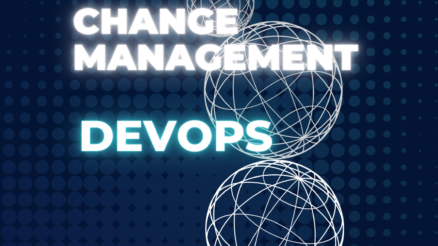Have you ever learned about a policy change in your workplace only after it has taken effect?
Or worse, have you ever received conflicting information about a policy change from different sources?
Poor communication about policy changes can create confusion and frustration among employees, leading to lower morale and productivity.
As an employer or manager, it’s crucial to communicating policy changes to employees or your team effectively.
This blog post will explain how to communicate policy changes to employees in a clear, concise, and effective way. And what are the steps involved in this communication process?
This aims to help employers and managers responsible for implementing policy changes, as well as HR professionals and anyone else who plays a role in communicating policy changes to employees.
Let’s dive in
Why is it essential to communicate policy changes to employees?
Effective communication is important when it comes to inform employees and stakeholders about any kind of changes in the workplace. But its more important when policy changes are being made.
First, policy changes can significantly impact employees’ daily work routines, expectations, and responsibilities. Therefore, it’s essential to ensure that all employees are well-informed and understand the reasons for the policy change and the implications for their work.
Secondly, better communication of policy changes can lead to clarity and satisfaction among employees, which can lead to lower morale and productivity. When employees need help understanding what’s expected of them, they may make mistakes or feel unsure about how to proceed, leading to inefficiencies and mistakes.
Thirdly, transparent and effective policy change communication helps build trust and transparency between management and employees. When employees feel that they have been informed of policy changes in a timely and accurate manner, they are more likely to trust management and feel valued as part of the organization.
Key Steps for Communicating Policy Change to Employees
Following are 04 key steps when it comes to communicating policy changes to your team or employees.
Step 1: Plan Ahead
Planning is essential as it allows management to identify key stakeholders affected by the policy change and ensure that they are included in the communication process.
This can help build buy-in and support for the change among employees, making the implementation process smoother.
Secondly, planning allows management to determine the best communication channels for policy change.
Employees may respond differently to different communication channels, and it’s essential to choose a channel that is accessible and effective for everyone. For example, some employees prefer in-person meetings, while others prefer email or video calls.
Thirdly, planning allows management to create a clear and concise message that includes all the necessary information about the policy change. This helps avoid confusion or misunderstandings among employees and ensures everyone is on the same page.
Here are some tips on how to create a communication plan for policy changes in the workplace:
- Identify key stakeholders: The first step in creating a communication plan is identifying the key stakeholders affected by the policy change. This may include employees, managers, HR staff, and other relevant parties. Please list these stakeholders and determine the best way to involve them in communication.
- Determine the purpose of communication: Determine the purpose of communication to inform employees of the policy change and the reasons for the change and to answer any questions or concerns they may have. Identify the goals and objectives of communication.
- Choose the best communication channels: Determine the best communication channels for each stakeholder group. This may include in-person meetings, email, video calls, internal messaging, or a combination of these channels. Consider the preferences of each stakeholder group and choose the most effective channel for each group.
- Develop a timeline: Develop a timeline for communication and stick to it. Ensure that the communication plan is implemented promptly to ensure clarity and understanding among employees.
- Create a clear and concise message: Create a clear and concise message that includes all the necessary information about the policy change. Be sure to explain the reasons for the change, the expected impact, and any necessary action steps employees need to take. Address potential concerns and questions that employees may have.
- Ensure two-way communication: Communication is two-way, with opportunities for employees to ask questions and provide feedback. This helps ensure that employees feel valued and heard and helps to address any concerns or misunderstandings.
- Follow up: Follow up with employees after the initial communication to ensure they understand the policy change and address any remaining concerns or questions. This helps ensure that the policy change is implemented smoothly and effectively.
Step 2: Craft the Message
Clear and concise messages are critical when communicating policy changes to employees. When employees receive a message that is easy to understand and includes all the necessary information, they are more likely to feel informed and empowered to make necessary changes.
Here are some tips on how to create a message that is clear and concise:
- Use simple language: Use simple and straightforward language that is easy for employees to understand. Avoid using technical jargon or complex terminology that may confuse employees.
- Keep it short: Keep the message short and to the point. Employees may need more time or attention span to read through lengthy messages, so it’s important to convey the message in as few words as possible.
- Focus on the benefits: Focus on the benefits of the policy change and how it will improve employees’ work experience or help the organization achieve its goals. This helps build buy-in and support for the change among employees.
- Include action steps: Include clear and concise action steps that employees must take to comply with the policy change. This can help to avoid confusion or misunderstandings among employees.
- Address potential concerns: Address potential concerns or questions that employees may have about the policy change and provide clear and concise answers to these questions. This helps alleviate any fears or concerns employees may have and helps ensure that the policy change is implemented smoothly.
- Provide examples: or scenarios that illustrate how the policy change will be implemented in practice. This can help employees to understand how the policy change will affect their work and can help to make sure everything is clear and precise.
- Get feedback from a sample group of employees: to ensure the message is clear and easy to understand. This can help to identify any areas of confusion or misunderstanding and can help to refine the message before it is communicated to the entire organization.
Step 3: Choose the Right Communication Channel
Choosing the right communication channel is the most important step while communicating policy changes to employees. Various communication channels are available, each with pros and cons. Here are some of the most common communication channels:
- Email: Email is a popular communication channel for policy changes as it is easy to reach many employees simultaneously. However, ensuring that all employees read the email can be challenging, and it may not be the most effective channel for more complex or sensitive policy changes.
- In-person meetings: In-person meetings effectively communicate policy changes, especially for more complex or sensitive changes. They allow employees to ask questions and provide feedback and can help build trust and understanding.
- Video calls: Video calls are an excellent alternative to in-person meetings, especially for remote or geographically dispersed teams. They provide a more personal touch than email and can help to facilitate discussion and collaboration.
- Internal messaging: Internal messaging platforms such as Slack or Microsoft Teams are effective for short and timely policy updates. They allow for easy dissemination of information, and employees can ask questions or provide feedback in real time.
When choosing the right communication channel, consider the nature of the policy change, the audience, and the level of detail required. Here are some tips on how to choose the right channel for your specific policy change and audience:
- Consider the audience: Consider the preferences and needs of your audience when choosing a communication channel. For example, if the policy change affects remote or geographically dispersed teams, video calls or internal messaging may be more effective than in-person meetings.
- Choose the right detail level: Consider the detail level required for the policy change. For complex policy changes, in-person meetings or video calls may be more effective than email or internal messaging.
- Determine the urgency: Determine the urgency of the policy change. For urgent policy changes, internal messaging or email may be the most effective channels to ensure the timely dissemination of information.
- Use a combination of channels: Consider using a combination of communication channels to ensure all employees receive the message. For example, you may send an email with a summary of the policy change, followed by an in-person meeting or video call to provide more detail and answer questions.
Step 4: Deliver the Message
The last step is to deliver the message to your team or employees.
Here are some tips to ensure that the message is received and understood by all employees:
- Be clear and concise: Deliver the message clearly and concisely to ensure all employees understand the policy change. Use simple language, avoid technical terms, and provide examples where possible.
- Use visual aids: Visual aids such as charts, graphs, or videos can help convey complex information more engaging and memorable way.
- Provide context for the policy change: It helps employees understand why it is necessary. Explain the benefits of the change and how it aligns with the company’s mission and values.
- Address concerns: Address any concerns or questions that employees may have about the policy change. Be prepared to support the change with examples, data, or other evidence.
- Follow up: Follow up with employees after the initial communication to answer any questions or concerns. Encourage employees to provide feedback and address any misconceptions.
- Provide resources: Provide employees with FAQs, training materials, or contact information for HR or management to help them navigate the policy change.
Final Words
Communicating policy changes to employees is a critical part of effective HR management. It’s important to plan ahead, craft a clear and concise message, choose the right communication channels, and deliver the message effectively. By following these steps and considering the needs of your audience, you can ensure that your policy change is communicated effectively and implemented successfully. Remember to follow up with employees, provide resources, and document the communication for future reference. Effective communication is key to building trust, increasing engagement, and achieving organizational goals.



